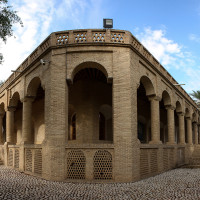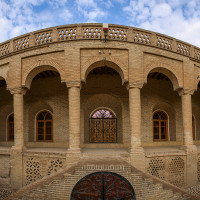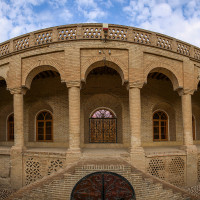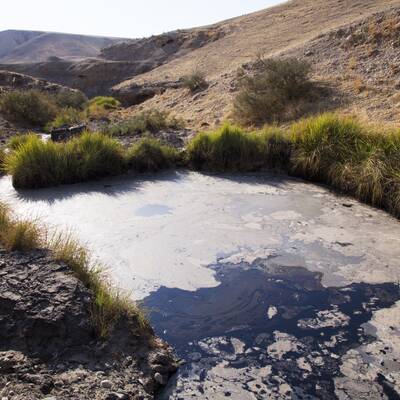
Ramhormoz Museum of Khuzestan
The Museum of Ramhormoz started its work in Samimi mansion in Ramhormoz city, in 1386 SH. Samimi mansion or Amir Sepahsalar garden is one of the residential-governmental gardens of Qajar constructed by Amir Hossein Khan Sepahsalar, one of the old Khans in Ramhormoz. The building of the museum backs to more than hundred years ago and it was being used as the residence of the ruler in Ramhormoz for many years. The garden was constructed inspired by the western gardens. The complex has an internal mansion and an entrance. The internal mansion that is also named belvedere has been constructed in two stories; a ground floor and a basement. The ground floor includes a hall, four rooms and a traditional restaurant with dome ceiling.
The basement embraces two rooms and a hall. The first floor is today active as the Museum of History and the basement as the Museum of Ethnography. Many ancient materials related to a time span between the pre-history and Islamic periods are displayed in the section of history. A part of objects is discovered items from archaeological excavations in Elamite graves and other excavations in Ramhormoz city. One of the most important treasures discovered from this place is Jubji treasure located seven kilometers southeast of Ramhormoz. The blade of the mechanical excavator suddenly hat an ancient coffin related to Elamite civilization during an excavation process in the region of Jubji in 1386 SH resulted in the discovery of a unique treasure.
After further excavations, another grave belonged to a woman was also discovered. According to the archaeological findings, the age of one of these women is supposed to be about 30-53 years. These two women had been buried along with an imprinted ring with the name of the local king of Elam carven on and many precious golden, silver, bronze, stone and pottery objects and they are estimated to be belonged to a certain social class or among the relatives of the king. Interesting among the discovered objects from this region are the so-called power ring decorated in cuneiform script, golden bracelet, wrist, 48 Misbaha’s beads made of opal and many other pieces of jewelry.



